Hepatitis C Quality of Life Impact Calculator
How Chronic Hepatitis C Affects Your Daily Life
This calculator estimates the impact of Hepatitis C on key aspects of your life and shows how Direct-Acting Antivirals (DAAs) can improve your quality of life.
| Aspect | Before Treatment | After Treatment (SVR) |
|---|---|---|
| Fatigue Level (1-10) | 8 | 3 |
| Depression Score (PHQ-9) | 14 | 5 |
| Work Absenteeism (days/year) | 20 | 5 |
| Social Activity Rating (1-5) | 2 | 4 |
Treatment Benefits Summary
After achieving a Sustained Virologic Response (SVR), most patients experience significant improvements:
- Energy levels increase dramatically within weeks of treatment completion.
- Mood improves, with depression scores dropping significantly.
- Work productivity increases as absenteeism decreases.
- Social engagement improves, helping reduce isolation.
With a cure rate over 95% using Direct-Acting Antivirals (DAAs), treatment can restore quality of life quickly and effectively.
Key Takeaways
- Chronic Hepatitis C can worsen physical health, mental wellbeing, and daily routines.
- Fatigue and depression are the most common quality‑of‑life threats.
- Direct‑acting antivirals (DAA) can restore health for many, but side effects and stigma may linger.
- Simple lifestyle tweaks-regular exercise, balanced diet, and support groups-can boost everyday happiness.
- Early diagnosis and staying on treatment are the best ways to protect long‑term wellbeing.
Living with a chronic virus can feel like an invisible weight. When the condition is Chronic Hepatitis C, that weight often shows up in how you feel physically, emotionally, and socially. This guide breaks down the ways the disease touches everyday life and offers practical steps to keep the impact as low as possible.
What is Chronic Hepatitis C?
Chronic Hepatitis C is a viral infection of the liver that lasts longer than six months. It’s caused by the hepatitis C virus (HCV) and spreads mainly through blood contact. About 71 million people worldwide live with the infection, and many don’t know they have it until symptoms appear or a routine blood test catches it.
Why does quality of life matter?
Quality of Life is a broad term that captures how a person feels about their physical health, mental state, and ability to do everyday activities. In chronic diseases, quality‑of‑life scores often predict hospital visits, medication adherence, and even survival. Understanding the specific ways Hepatitis C interferes helps you focus on the right changes.

Physical health effects
The liver is a central hub for metabolism, detoxification, and nutrient storage. When HCV damages liver cells, several physical symptoms can arise:
- Fatigue - Up to 80% of patients report constant tiredness that isn’t fixed by sleep.
- Joint and muscle aches - Inflammation can spill into surrounding tissues.
- Digestive upset - Nausea, loss of appetite, and mild abdominal pain are common.
- Skin changes - Some develop a yellowish tint or small red spots called petechiae.
- Progression to Liver Fibrosis - Over years, scar tissue builds up, leading to cirrhosis in up to 20% of untreated cases.
The severity of these symptoms often fluctuates, making it hard to plan work or social activities. The unpredictability alone can erode confidence.
Mental health and emotional wellbeing
Living with an invisible illness can spark a cascade of emotions. Studies from 2023‑2024 show that people with chronic Hepatitis C are twice as likely to experience clinical depression compared with the general population.
- Depression frequently co‑exists with fatigue, creating a vicious loop where low mood worsens tiredness.
- Anxiety about disease progression, especially the risk of developing liver cancer, fuels constant worry.
- Stigma remains a hidden burden. Even in 2025, many patients report being judged for “leaving a disease behind” despite having cleared the virus.
These mental pressures can diminish motivation to stick with treatment or healthy habits, so addressing them early is essential.
Social life and daily routines
The ripple effect reaches relationships, work, and hobbies:
- Work productivity drops as fatigue and concentration lapses increase.
- Social gatherings may feel exhausting, leading to isolation.
- Family members sometimes take on caregiving roles, shifting household dynamics.
In a 2024 survey of 1,200 patients, 42% said they missed at least one major family event each year because of symptoms. That kind of pattern can erode sense of belonging.
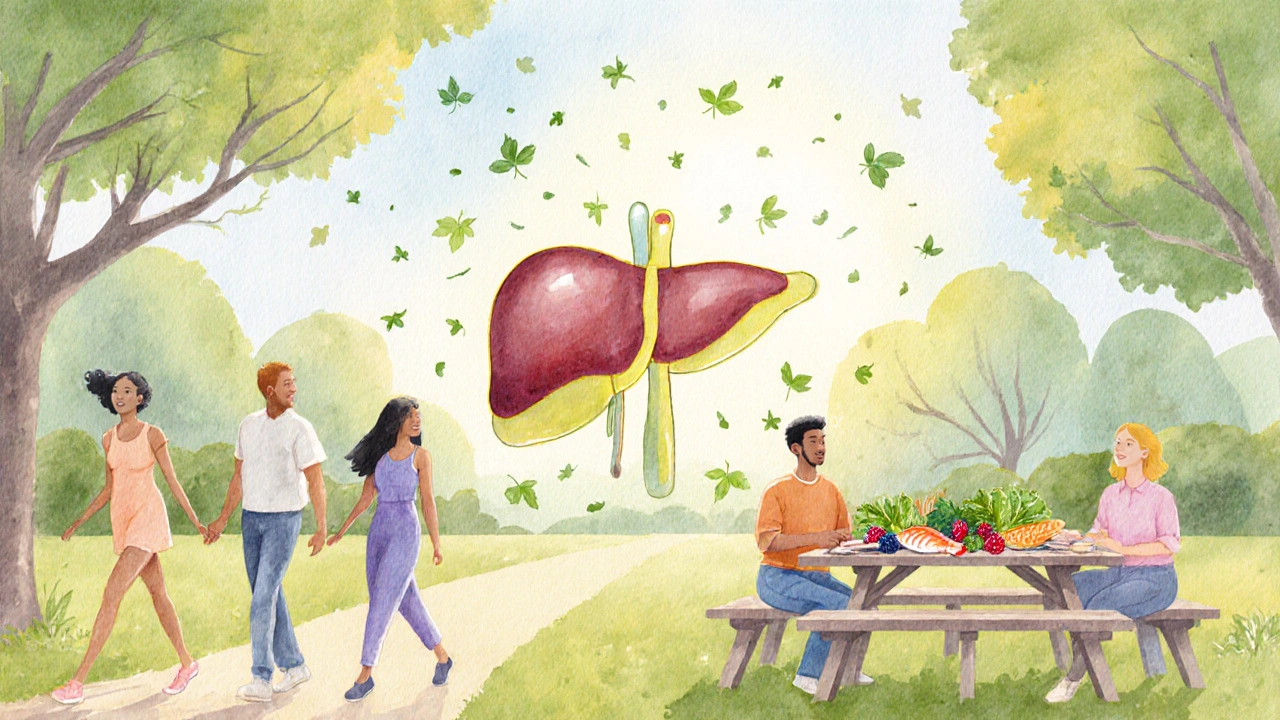
How treatment changes the picture
Since 2014, the standard of care has shifted to Direct‑acting antivirals (DAA). These pills target the virus’s replication machinery and offer cure rates above 95%.
The most common regimen is a 12‑week course of sofosbuvir‑ledipasvir or glecaprevir‑pibrentasvir. Side effects are mild-headache, fatigue, or nausea for a few days-compared with older interferon‑based therapies.
Achieving a Sustained Virologic Response (SVR) (undetectable virus 12 weeks after treatment) translates to a functional cure. Most patients report a sharp rise in energy and mood within weeks of finishing therapy.
| Aspect | Before Treatment | After SVR |
|---|---|---|
| Fatigue level (1‑10) | 7‑9 | 2‑4 |
| Depression scores (PHQ‑9) | 12‑15 | 4‑6 |
| Work absenteeism (days/yr) | 15‑30 | 3‑7 |
| Social activity rating (1‑5) | 2 | 4‑5 |
Practical steps to improve everyday quality of life
Even if you’re still on medication or have completed a cure, everyday habits make a big difference.
- Stay active: Aim for 150 minutes of moderate exercise per week-walking, cycling, or light resistance training curbs fatigue and lifts mood.
- Eat liver‑friendly foods: Prioritize leafy greens, berries, omega‑3‑rich fish, and limit alcohol, sugary drinks, and processed meats.
- Prioritize sleep hygiene: Keep a consistent bedtime, dim lights an hour before sleep, and avoid caffeine after 2pm.
- Seek mental‑health support: Talk therapy, mindfulness apps, or support groups can break the fatigue‑depression loop.
- Manage stigma: Educate friends and coworkers about the modern cure rates; knowledge reduces fear.
- Regular monitoring: Even after cure, get liver ultrasounds or elastography every 1‑2 years to catch any residual scarring.
Small changes stack up; many patients notice a steady lift in energy after just a month of consistent habits.
When to talk to your doctor
Keep an eye on warning signs that need professional attention:
- Sudden increase in abdominal pain or swelling.
- Jaundice (yellowing of skin or eyes).
- New or worsening mental health symptoms.
- Persistently low platelet count or abnormal liver enzymes in blood tests.
Early intervention can prevent complications and keep quality‑of‑life scores higher.
Frequently Asked Questions
Can I still lead a normal life after a cure?
Most people feel back to normal within weeks of achieving SVR. Energy, mood, and work performance usually bounce back, though it helps to keep up the healthy habits learned during treatment.
Does the virus ever come back after a cure?
Re‑infection is possible if you’re exposed again to HCV, but the original infection does not return. Staying informed about safe practices and vaccination against hepatitis A and B reduces risk.
What’s the biggest hidden cost of living with Hepatitis C?
Emotional fatigue. Even mild physical symptoms can erode motivation, leading to missed appointments and poorer health outcomes. Addressing mental health early often saves time and money later.
Are there lifestyle changes that speed up liver healing?
Yes. A balanced diet low in saturated fat, regular aerobic activity, and complete abstinence from alcohol are the top three evidence‑based actions that improve liver elasticity scores within a year.
How often should I get liver imaging after cure?
Guidelines suggest an ultrasound or elastography every 1‑2 years for the first five years, then every 3‑5 years if no cirrhosis was present. Your doctor may adjust the schedule based on your age and other risk factors.

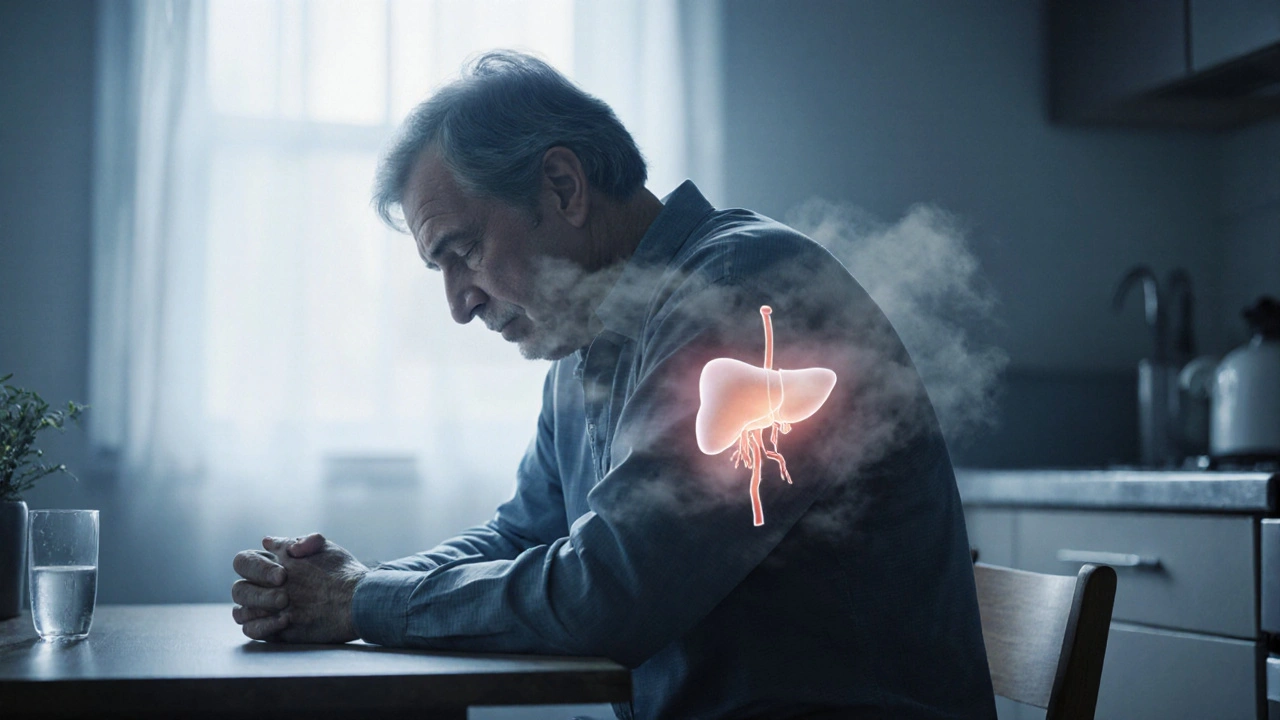
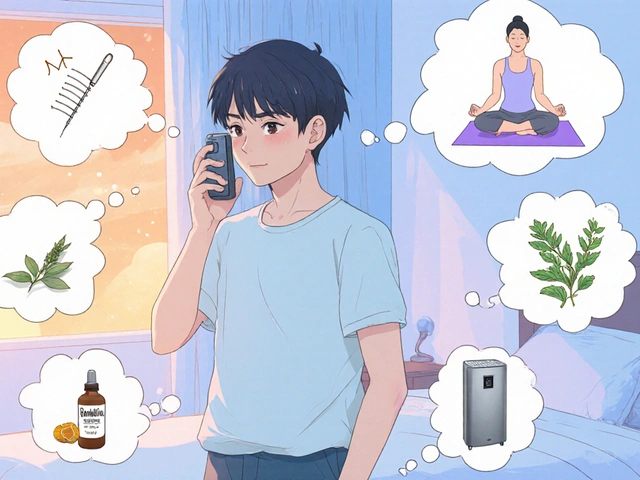
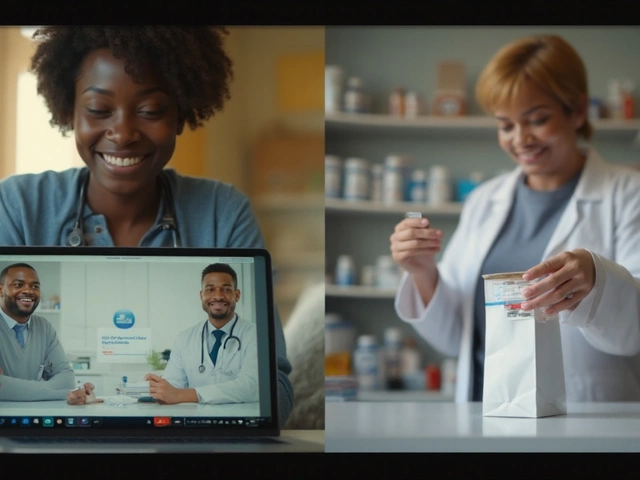

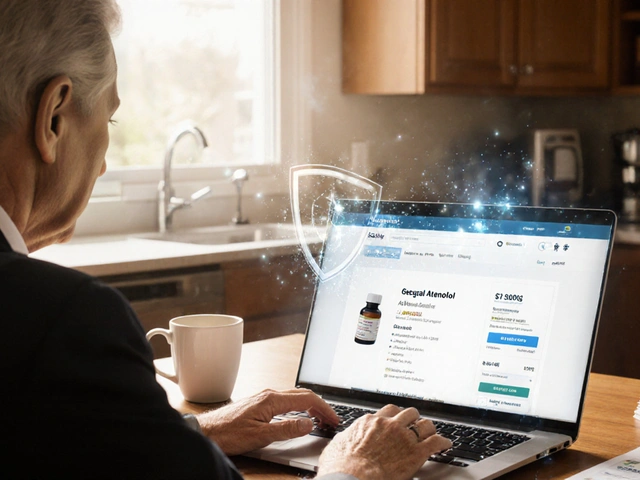
Courtney The Explorer
October 10, 2025 AT 21:12Our national health agenda must prioritize cutting‑edge antivirals, allocate federal grants for liver‑screening programs, and eradicate the lingering stigma that haunts chronic hepatitis C patients; the data clearly demonstrate that early DAA deployment slashes fatigue, depression, and work absenteeism, thereby bolstering economic productivity across the board, and policymakers should act swiftly!
Ashleigh Connell
October 14, 2025 AT 08:33Really nice rundown of the numbers-seeing the fatigue drop from 8 to 3 after treatment is huge. It’s amazing how a short course of DAAs can lift mood and get people back to the things they love, like hanging out with friends or picking up a hobby.
Erin Knight
October 17, 2025 AT 20:26The article skims the surface, glossing over the sociopolitical complexities that still tether many patients to marginalization; a deeper dive into insurance barriers and the lingering prejudice in workplaces would have elevated the discourse beyond a mere checklist.
Kavita Jadhav
October 21, 2025 AT 08:36It’s true that stigma still looms, and many still feel isolated even after a cure. Offering peer‑support groups and culturally sensitive counseling can bridge that emotional gap, helping people reclaim confidence in everyday interactions.
Tony Halstead
October 24, 2025 AT 20:46Think of the treatment journey as a narrative of resilience: patients confront uncertainty, navigate side‑effects, and ultimately emerge with restored vitality. Sharing personal success stories can inspire others to seek testing and treatment early.
leo dwi putra
October 28, 2025 AT 09:13Wow, the transformation after SVR reads like a plot twist in a drama series-fatigue plummets, mood lifts, and suddenly the protagonist can finally attend that long‑postponed reunion!
Krista Evans
October 31, 2025 AT 21:40Keep moving forward, stay active, and remember that every step-no matter how small-adds up to a healthier, happier you.
Mike Gilmer2
November 4, 2025 AT 10:23Honestly, the post captures the agony‑to‑euphoria arc better than a blockbuster-talk about a cinematic recovery!
Matt Laferty
November 7, 2025 AT 23:06When looking at the broader clinical picture, it becomes evident that chronic hepatitis C is not merely a hepatic concern but a systemic challenge that permeates every facet of a patient’s daily existence. The persistent fatigue reported by up to 80% of individuals can masquerade as ordinary tiredness, yet it undermines occupational performance, diminishes social engagement, and erodes personal motivation. Concurrently, the psychological burden-manifested through elevated PHQ‑9 scores-feeds a feedback loop wherein low mood amplifies perceived exhaustion, creating a vicious cycle that is difficult to break without targeted intervention.
Direct‑acting antivirals, however, have revolutionized this landscape by offering cure rates exceeding 95%, effectively decoupling the virus from its pathogenic cascade. Post‑treatment data show a precipitous decline in fatigue levels, often falling from the high‑single digits to the low‑single digits within weeks, and depression scores can drop by more than half, restoring emotional equilibrium.
Beyond these measurable outcomes, the qualitative improvements are profound: patients report renewed enthusiasm for hobbies, re‑engagement with community activities, and a stronger sense of agency over their health decisions. Such psychosocial uplift translates into tangible socioeconomic benefits. Reduced absenteeism, for instance, directly correlates with increased productivity and lower employer costs, while enhanced social participation mitigates isolation and its attendant health risks.
Nevertheless, sustaining these gains requires a holistic approach. Lifestyle modifications-regular aerobic exercise, a diet rich in antioxidants, and strict avoidance of hepatotoxic substances like excess alcohol-serve to reinforce hepatic regeneration and overall well‑being. Moreover, ongoing surveillance through periodic elastography or ultrasound ensures that any residual fibrosis is monitored, preventing late‑stage complications.
In sum, the transition from chronic infection to cured status is not merely a binary event; it is a catalyst for multidimensional recovery that reshapes physical health, mental resilience, and social vitality. Embracing comprehensive post‑cure care maximizes the long‑term dividends of today’s highly effective antiviral therapies.
Genie Herron
November 11, 2025 AT 12:06Life gets better after cure